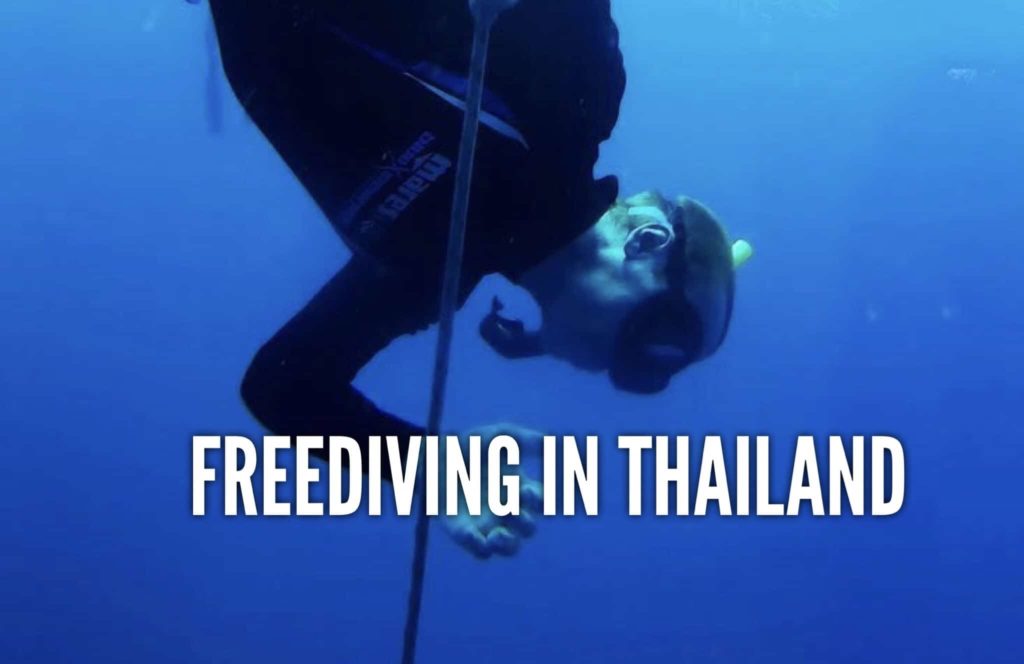Last updated: January 18, 2023
Freediving is growing in popularity.
I took a Level 1 SSI certification workshop in Koh Tao, Thailand. My instructor’s name was Candelaria working for Blue Immersion.
These are my notes from the classes.
Instructor and Dive Shop
Candelaria is from Argentina but now lives near Cancun, Mexico.
She was working for Blue Immersion dive shop, which exclusively provides free diving training on Koh Tao.
As of August 2017, they were one of the only two shops that offer the 2-day introductory course. The other is Apnea Total.
Both shops price the course at 5500 Thai baht. Lunch was included each day and there were no additional fees.
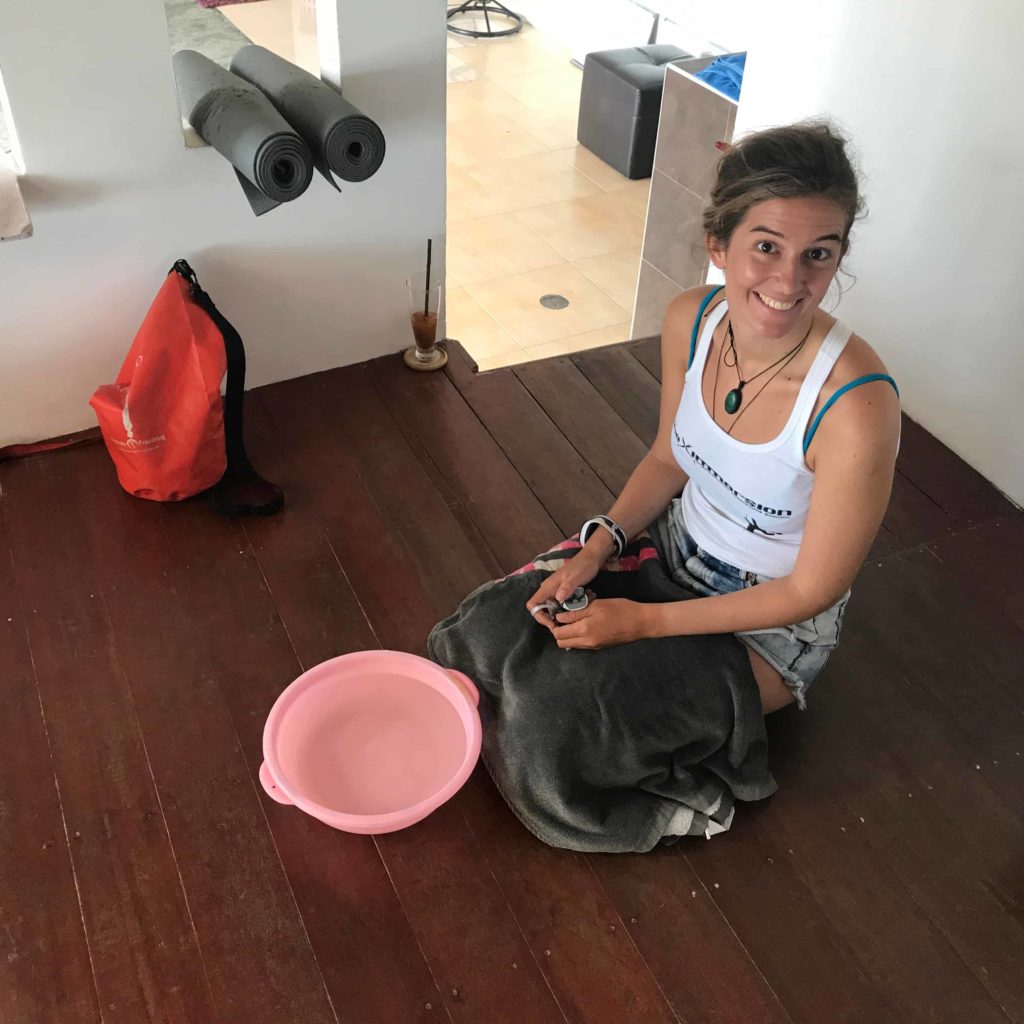
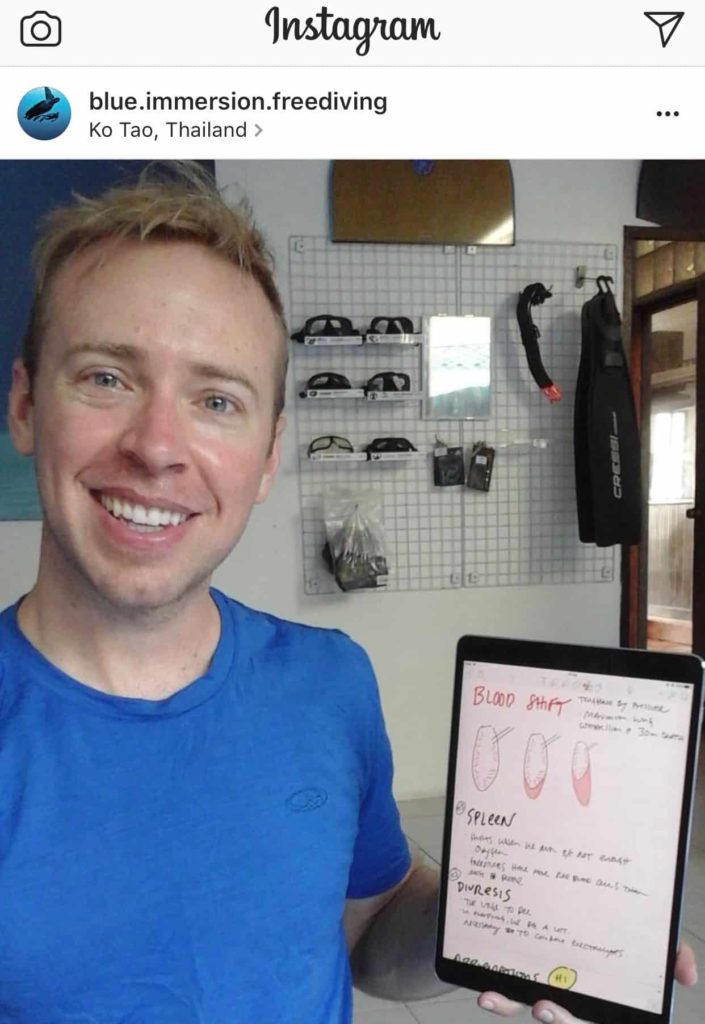
The Best Freediving Spots
My instructor mentioned these places as good places to go try the sport:
- Egypt: The Blue Hole
- Bali Freediving
- Koh Tao: Limited Depth
- Mexico near Cancun/Tulum
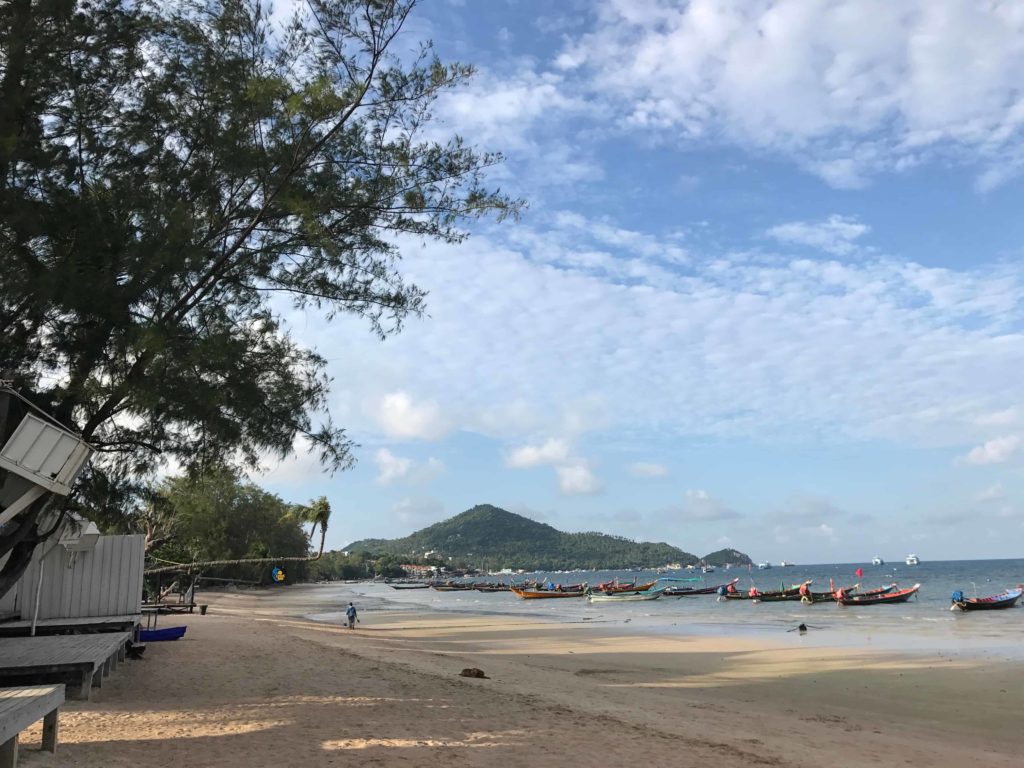
Day 1 Goals
On the first day, our goal is to know whats happening in the water.
We should understand physiologically, in the body when we hold our breath, what is happening.
It is a very mental sport.
Skills
There are four main skills in the water:
- Arm strokes, in case I get cramps
- Mask off
- Rescue
- Constant weight vs. free immersion

- Diffusion: When stuff moves from a place of higher concentration to a place of lower
- What is the most unnatural thing a human can do? Hold their breath
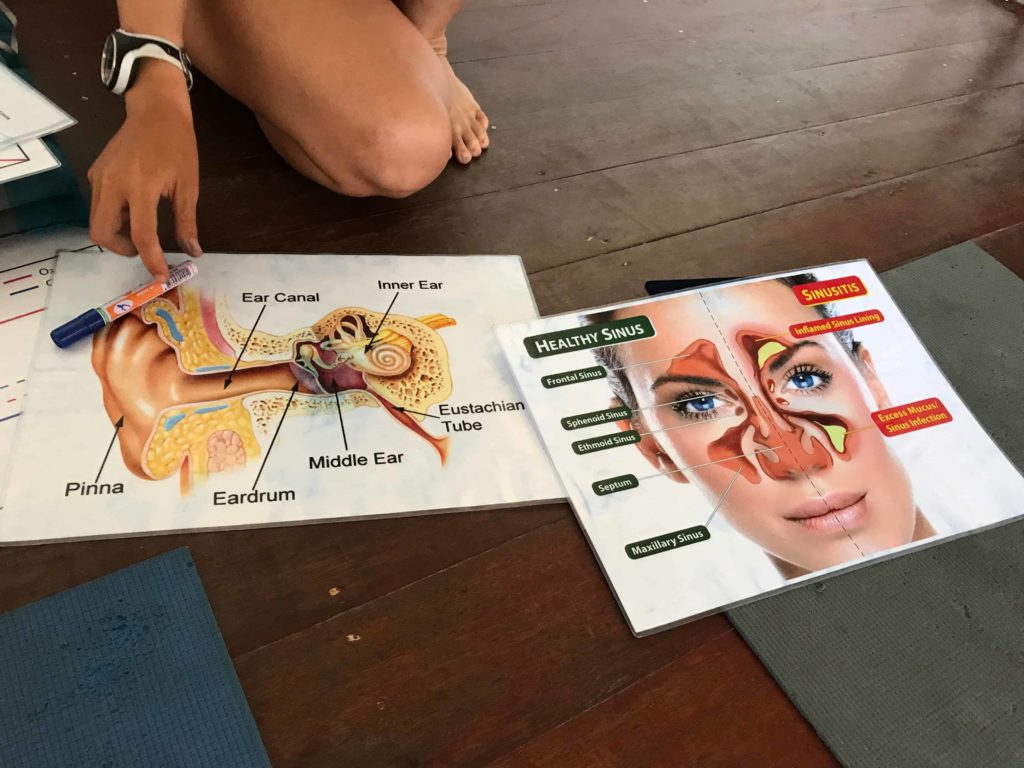
What happens when we hold our breath
- Swallowing
- Pressure on chest
- Contractions
This is called the urge to breathe.
- Fight the brain versus fight the body
- Listen to your body
Hyperventilation
More Oxygen and less Carbon Dioxide reduces the urge to breathe. This is bad.
- Brain vasoconstriction
- Bohr effect
No hyperventilation in freediving
Bohr Effect: Red blood cells carry oxygen in our blood.
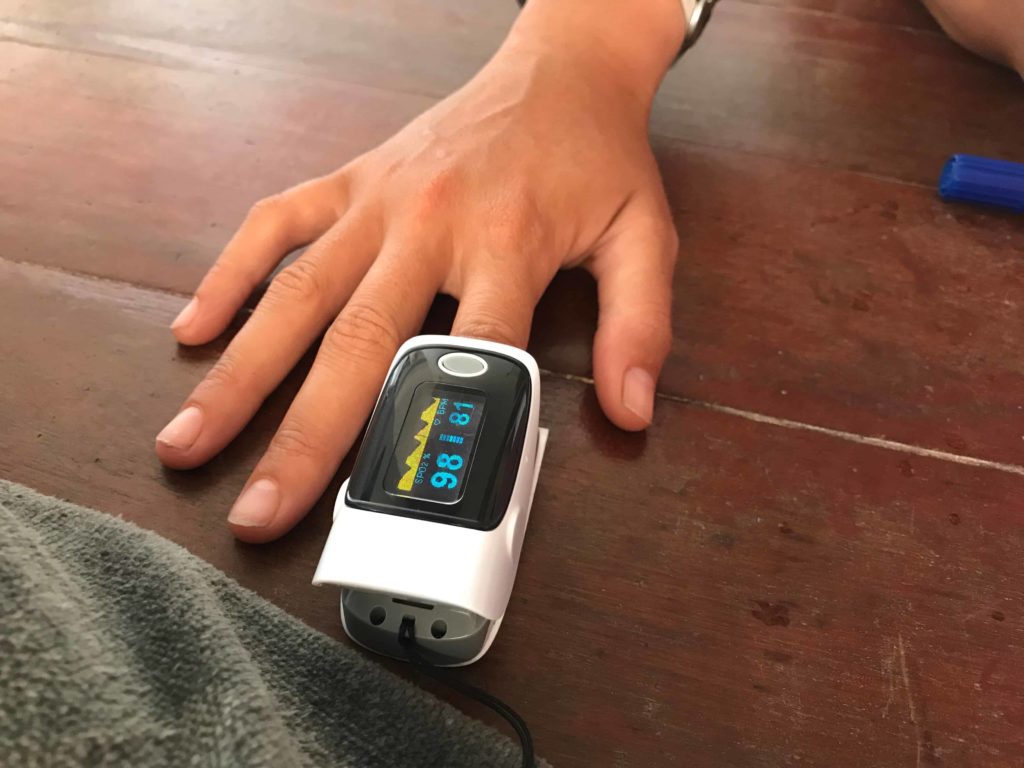
Breathing
- Relaxation Breathing
- Final Breath
- Recovery Breathing
Observation: Seeing Candelaria do her final breath, seeing how her lungs inhale, was very impressive! She is from Argentina, now lives in Mexico. Her sister runs a freediving shop there.
Recovery breathing: Make it a habit, and do it 3x every time we surface.
My First Breaths
After learning some techniques to calm the body, I held my breath for 1:30, then 1:45, then 2:06.
Boyle’s Law
The law itself can be stated as follows: For a fixed amount of an ideal gas kept at a fixed temperature, pressure and volume are inversely proportional.
Or Boyle’s law is a gas law, stating that the pressure and volume of a gas have an inverse relationship, when the temperature is held constant.
Lung Capacity of a man is about 8L, and for a woman 6L.
Equalization techniques:
- Toynbee technique
- Hands Free
- Valsalva
- Frenzel technique
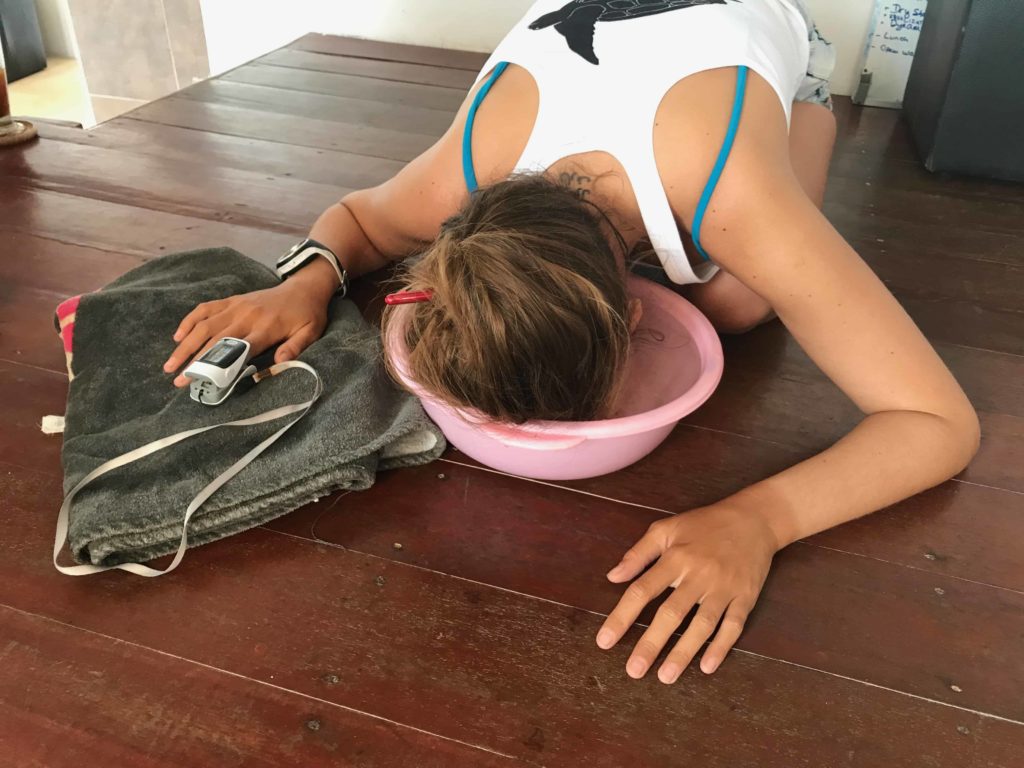
Mammalian Diving Reflex
- Survival instinct
- We have certain receptors in the face
- Professionals don’t use a mask because it blocks the receptors
This reflex triggers things in the body to make better use of oxygen
Bradycardia: slower heart rate
You can trigger this by holding your breath, but water on your face has more effect.
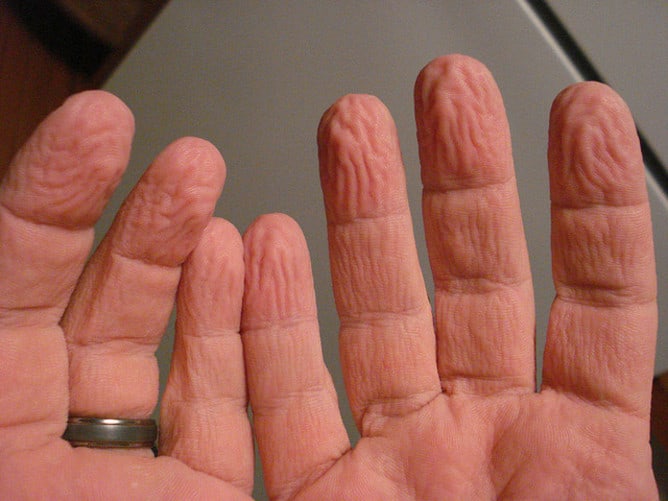
The crinkly finger tips that happen after you’ve been in the water for a long time? This is thought to be evolutionary so we may be able to attach to a rock and to more easily climb like a reptile.
Peripheral Vasoconstriction happens to protect brains, lung and heart
Blood Shift
Note: Freediving is a very young sport.
Blood Shift is triggered by pressure. Maximum lung compression @30 meters depth
Spleen
- Hurts when we run because not enough oxygen
- Freedivers have more red blood cells than most people
Diuresis
- The urge to pee
- In freediving we pee a lot
- Necessary to consume electrolytes
Abbreviations
- C.W.I. = constant weight, kicking down and up, don’t drop weight
- F.I. = discipline of grabbing the line
- C.N.F. = constant weight, no fins
Freediving Workshop Photographs
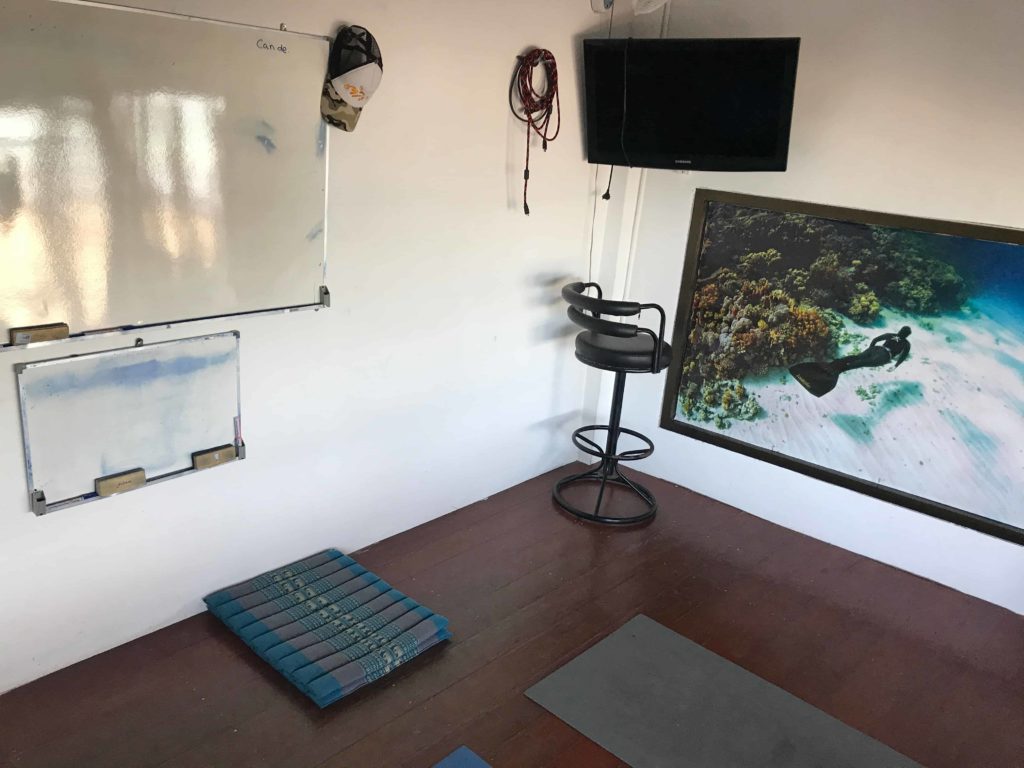
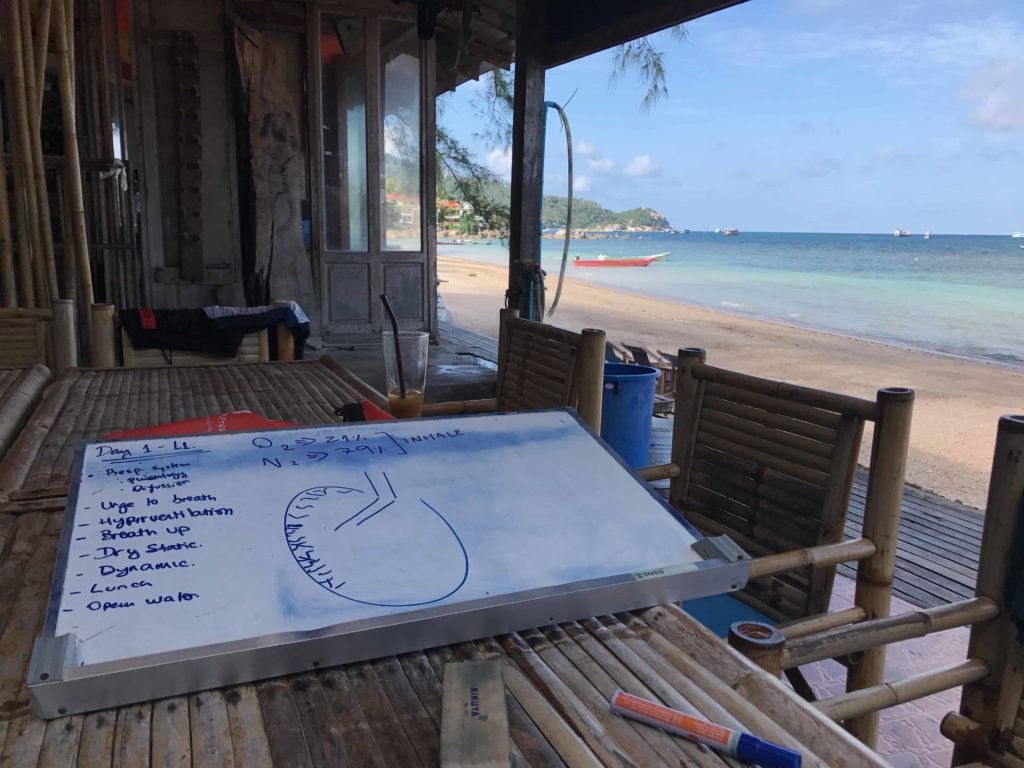
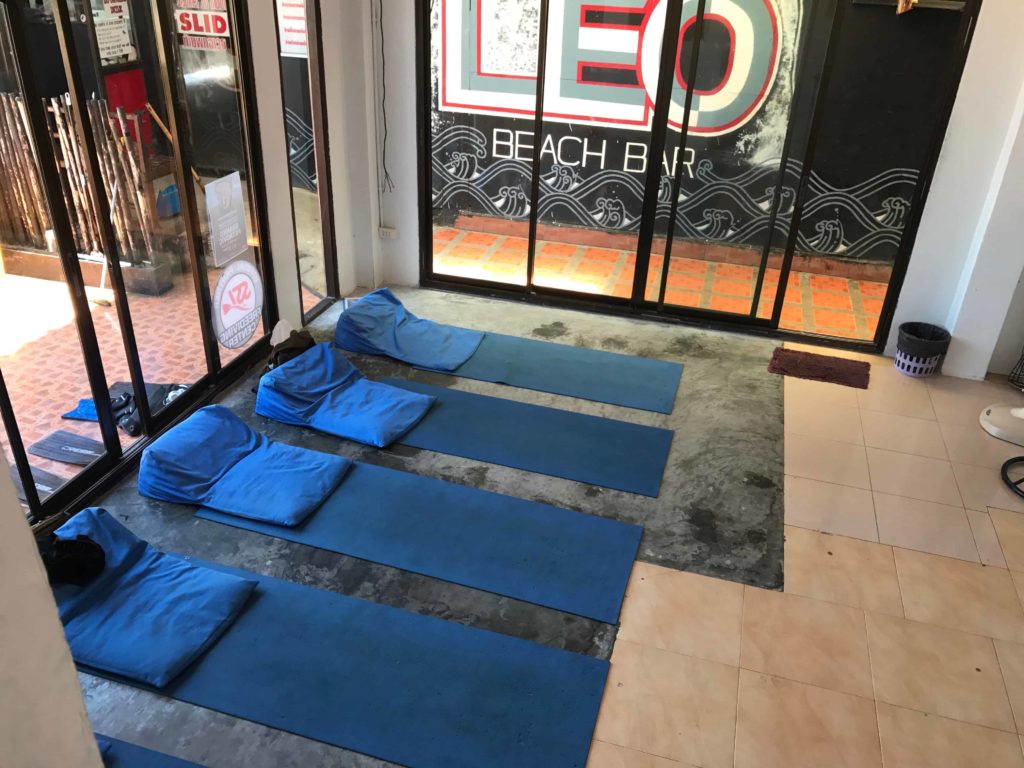
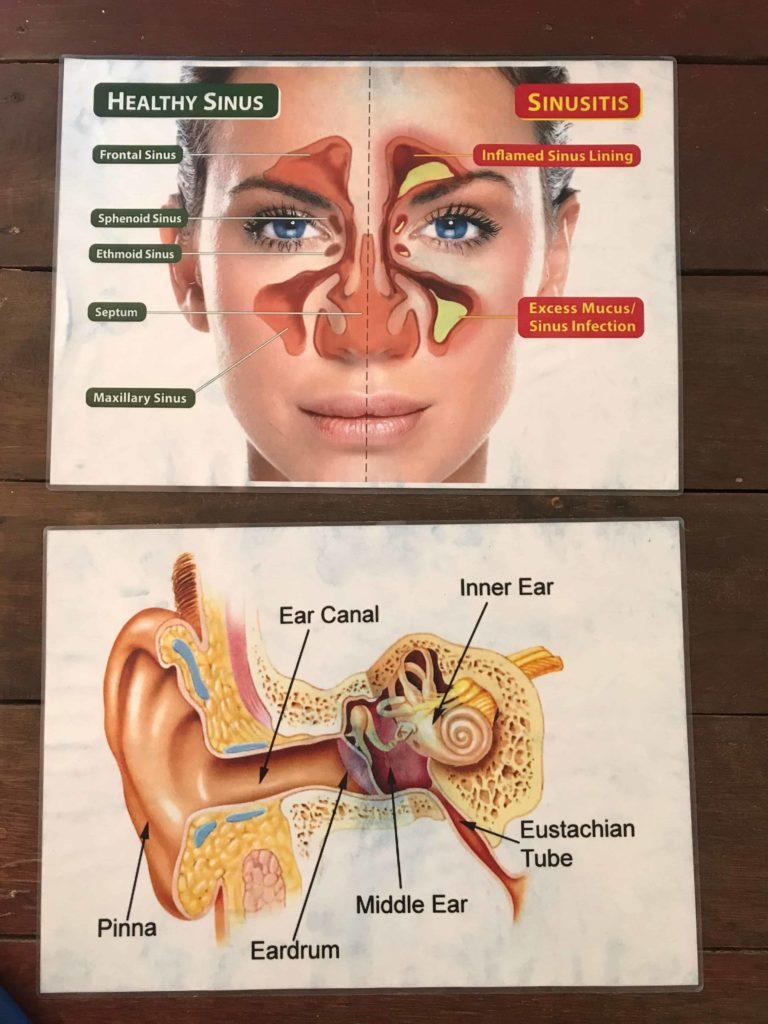
New Innovation: Live Video
For the first time ever, now there is live video shot by underwater drone. Transmitted to surface live for first time ever now. “This will amplify the sport. Now can be easier sent to the media-before just had to wait, never know if someone blacks out.
Sport and Media
My instructor told me about a new submarine drone that can broadcast live video from great depths.
Now freediving competitions can be broadcast on television and streamed online in real-time.
This presents some interesting challenges, such as a recent competition where a diver had a blackout and a difficult recovery. Most new viewers might get scared away seeing something like that live on television.
Here is a previously streamed freediving competition that I found:
FWIW, there are a lot of videos online of freedivers having accidents, blacking out, being rescued, etc.
Blackouts
- Oxygen normal in body is 0.21 (21%), minimum is .10 (10%)
- Under 10% oxygen in blood means we blackout
- Blackout is brain shuts off, heart keeps going
- Body makes this decision to save oxygen
- Loss of motor control
- Loss of motor control typically happens at buoy, must do recovery breathing
Laryngo Spasm
Part of the M.D.R. causes the tubes to constrict so we don’t inhale water.
Types of Blackouts
- shallow water blackouts are most common
- re-expansion of oxygen
- body needs less oxygen below, but when you come up lungs re-inflate…need more oxygen…blackout 10m, 5m
- balance of “it is a mental sport” versus “listen to your body”
Note for fun dives: wait at surface at least 2x of underwater dive for breathe-up
SCUBA first, then dive. Wait 12-24 hours. In SCUBA, they teach you to never hold your breath. But in freediving we always hold our breath.

If Scuba divers are the vegetarians of the ocean, then Freedivers are the vegans of the sea.
Pictures of Me Diving
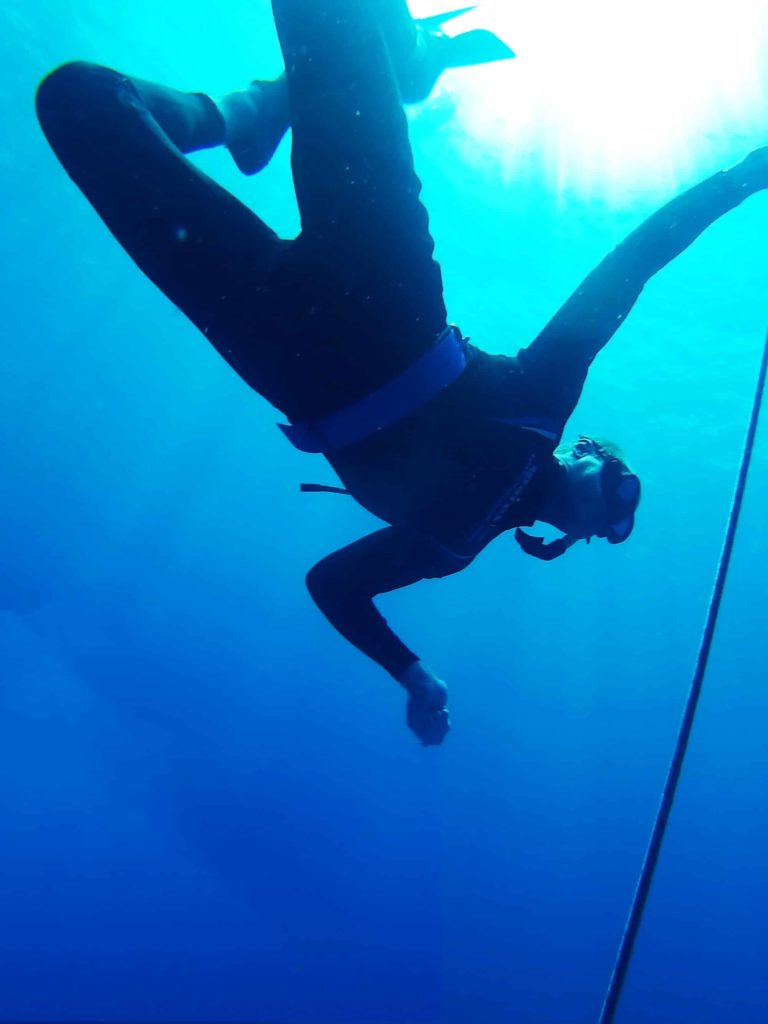
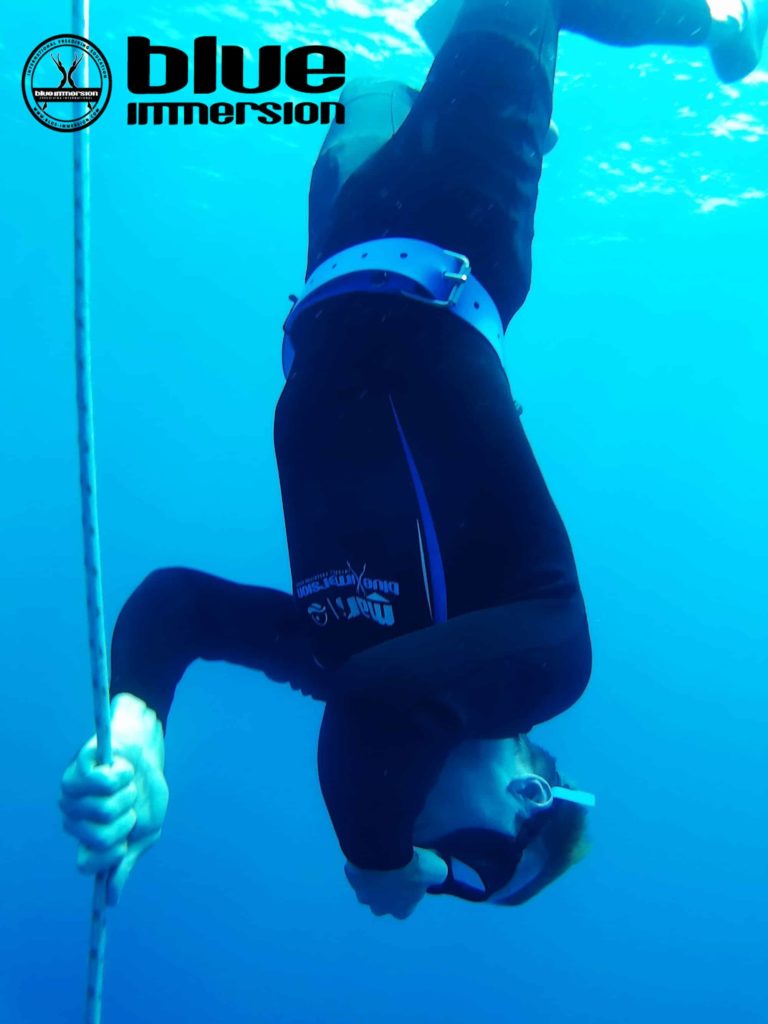
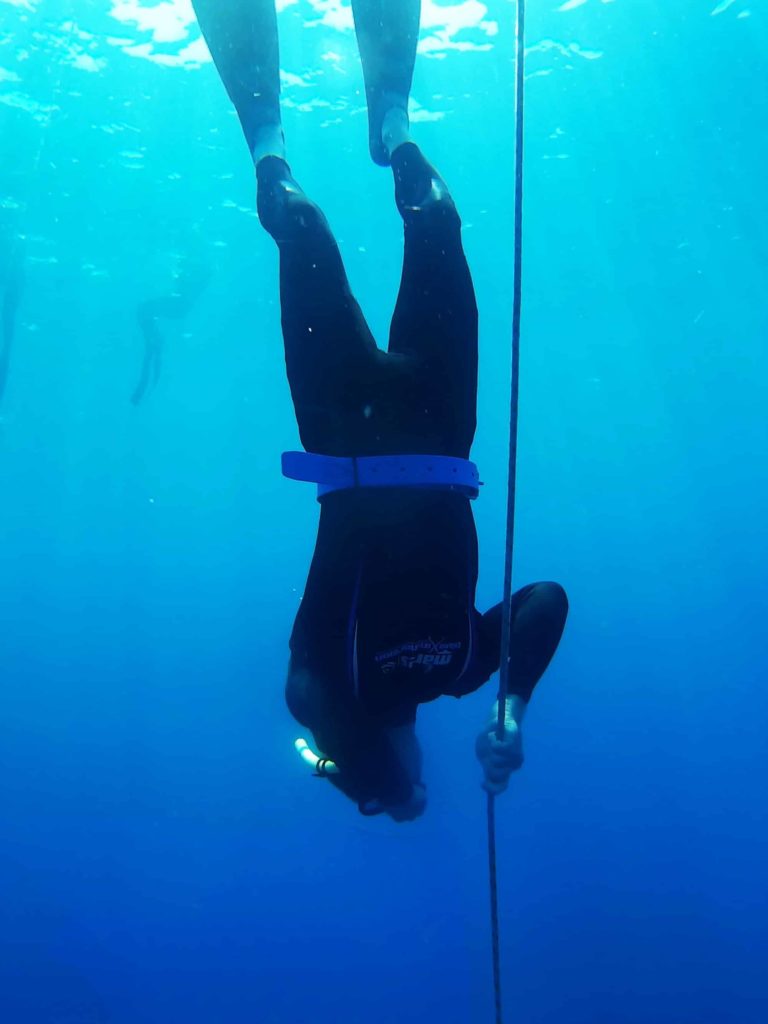
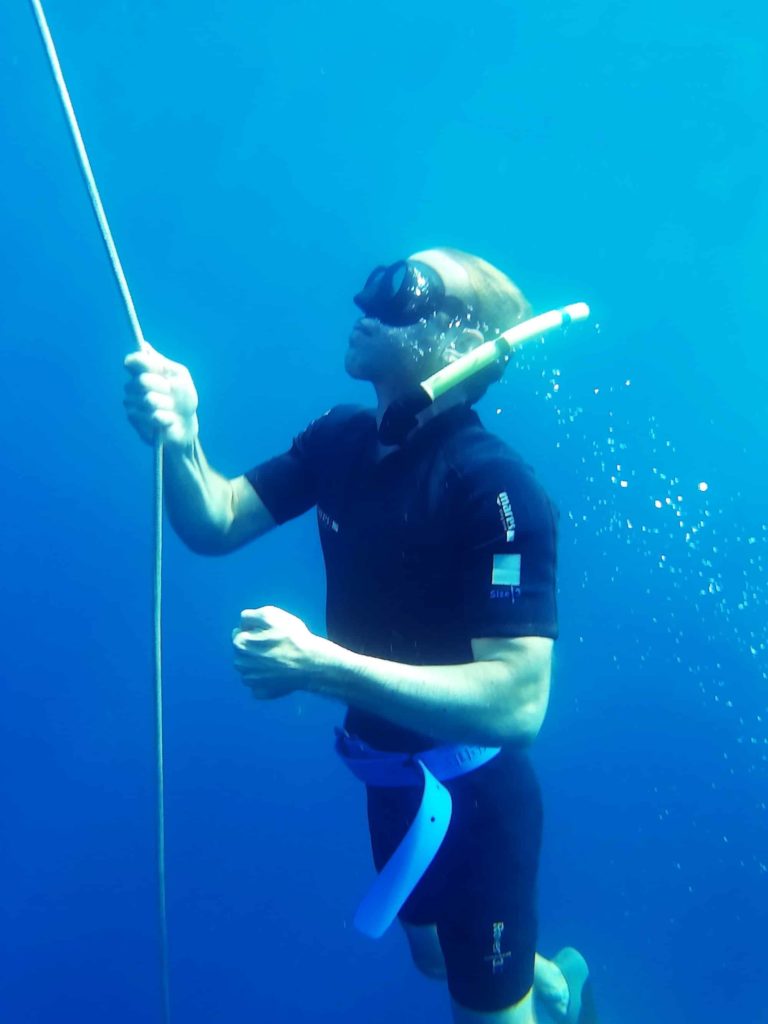
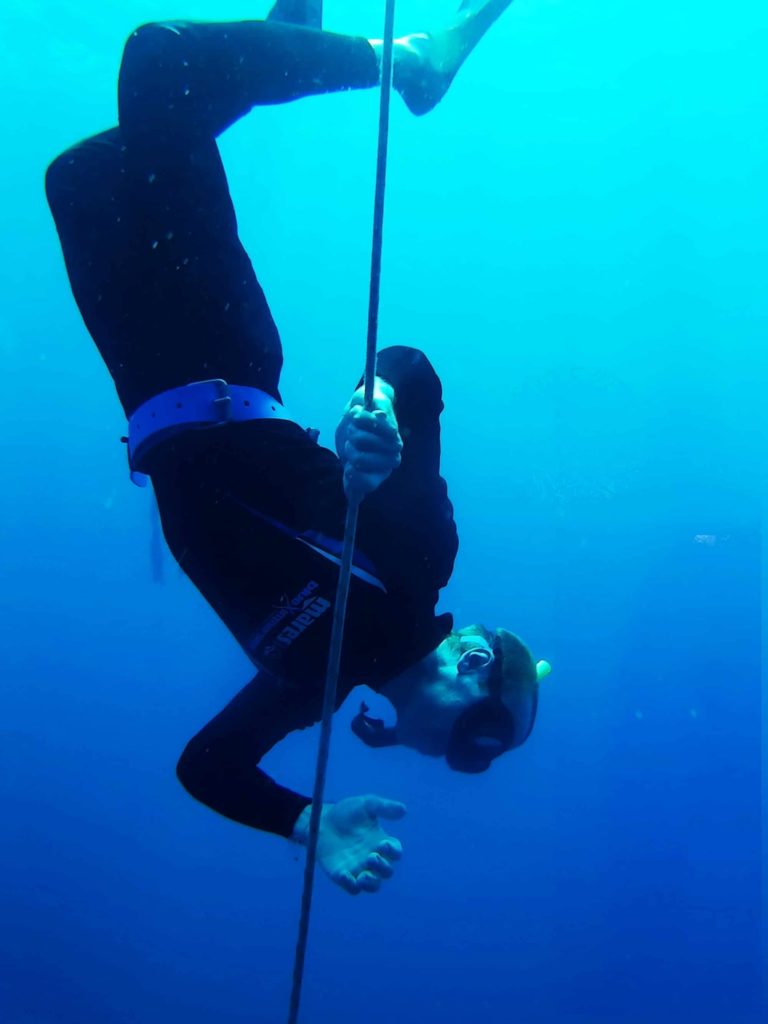
Conclusion
The workshop was great. My instructor was very good, and I would recommend Blue Immersion for freediving in Thailand.
These are raw notes that are largely unedited. Do not use them for official training, and assume that any errors are my fault from misunderstanding.

